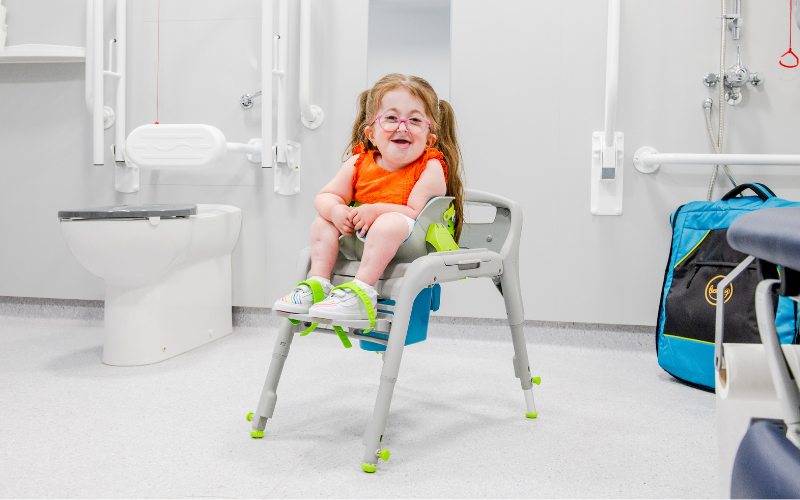I’m sure we’re all familiar with squatting to build muscle in our legs and bums but have you ever thought about squatting in a more functional sense?
Outside of the gym, the squat posture isn’t a daily sighting in the UK or Ireland for the most part! After spending some time in Asia a few years ago it was so interesting to see how common this position was for everyone no matter their age. From relaxing, cooking, socialising and more, squatting was for a lot more than exercise – it was even used for going to the toilet.
The healthcare field is encouraging us to come full circle as squatting to go to the loo is considered the healthiest option for us all (visit National Institute for Clinical Excellence for guidelines).
After these observations I had to do some digging. Turns out that the toilet most Western societies are used to is actually a very modern concept. A “throne like” toilet was initially adopted by royalty and as such, everyone wanted one! Then came the invention of the U-bend toilet. All of this led to sitting instead of squatting being considered the normal way to pee or poo. The healthcare field is encouraging us to come full circle as squatting to go to the loo is considered the healthiest option for us all (visit National Institute for Clinical Excellence for guidelines).
These findings around toileting and squatting were on the backburner until we got the chance to develop a new supportive toilet seat for little ones. I got to put my knowledge to use and kickstart the research into this new product. Some technical bits coming up!
We all have a muscle call the puborectalis, which is a part of our pelvic floor, it wraps around the rectum to keep us continent. It works a bit like a rubber band pulling on the anal canal, creating an angle in the rectum. This muscle is why we can sometimes strain when we’re on the toilet – unless we squat. When we squat the puborectalis relaxes and the angle is gone from the rectum which means gravity can do a lot of the work for us. Isn’t that cool?
Squat based exercises can reduce instances of incontinence in children according to a new study by Garcia-Fernandez and Emanuel Petros (2020).
I found some research to back me up on how great squatting is! Studies have found that people who squat to go report that they strain less and don’t take as long to go (Sikirov, 2003) and that lower abdominal pressure that happens when we squat also means less effort is required (Tashiro et al, 2020).
Children with additional needs can experience chronic constipation and can require regular use of laxatives to combat this. Trunk control can be poor or slower to develop in children with additional needs, this can influence pelvic control, which can lead to incontinence and habits that can be tricky to break. These factors, plus unclear continence advice or healthcare support, add up to low or non-existent expectations from families on developing toilet skills.
We want to change those expectations!
As you have guessed, we’re fans of the squat posture. It assists in our natural physiological functions with added bonuses of stretching out tight muscles and reducing strain on the toilet. These factors can result in victories when developing toileting skills and this in turn can have positive knock on effects on quality of life and the ability to participate for children and their families. It sounds pretty good, right? There is a product out there to support all of the above for children with additional needs, encouraging progress and positive expectations for the future.
Purchase GottaGo here – GottaGo (fireflyfriends.com)
Read our ‘Toilet Training, Give it a Try!’ blog post – Firefly GottaGo – Toilet Training, Give it a Try! – Firefly Blog (fireflyfriends.com)
References
- https://www.nice.org.uk/guidance/cg49/chapter/1-Guidance
- Sikirov, D. Comparison of Straining During Defecation in Three Positions: Results and Implications for Human Health. Dig Dis Sci48, 1201–1205 (2003). https://doi.org/10.1023/A:1024180319005
- Tashiro, Daisuke & Nakahara, Masami & Kitajima, Eiji & Haraguchi, Kenzo. (2020). The effects of a defecation posture, supported by the upper limbs, on respiratory function. Journal of Physical Therapy Science. 32. 332-336. 10.1589/jpts.32.332.
- Garcia-Fernandez, A. and Emanuel Petros, P. 2020. A four-month squatting-based pelvic exercise regime cures day/night enuresis and bowel dysfunction in children aged 7–11 years. Central European Journal of Urology, 73(3), pp. 307-314.
- Talu, B. 2018. Determine the Relationship Between Abdominal Muscle Strength, Trunk Control and Urinary Incontinence in Children with Diplegic Cerebral Palsy. Urology Journal, 15(4), pp. 180-185.
